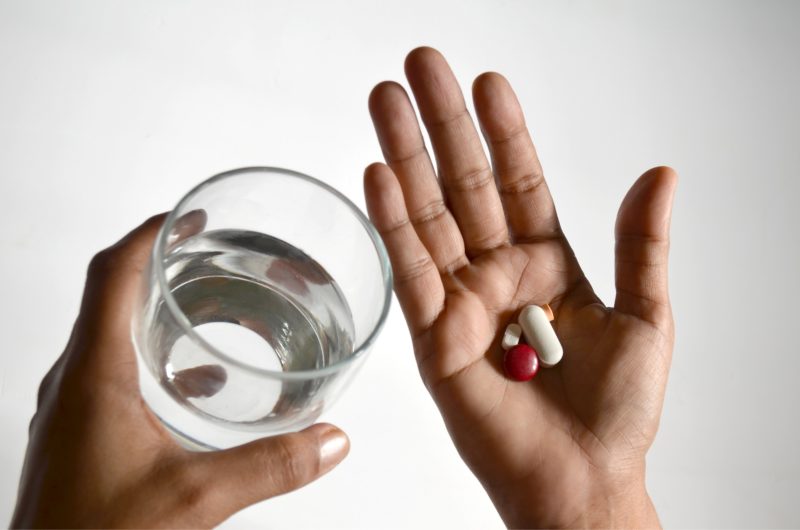At least 6 out of 10 US adults who have internet access use the internet to look up health information. We are all self-diagnosing, self-prescribing and generally bypassing a visit to the GP in exchange for a quick search on Google. And it's not just the internet where we get acquainted with health advice.
There's those incredibly thin sheets of instructions folded up like origami and stuffed inside medicine boxes. And then there are the leaflets we are handed at the doctors advising us on what we should and shouldn't be doing. And what about consent forms dense with text that we are asked to sign to say yes, we do understand exactly what we are letting ourselves in for when we agree to a given procedure or to take a certain medicine?
Especially for the 74% of the US adults who go online, health information is at our finger tips. If knowledge is power, then having easy access to all this health information is a good thing, right? Well, that depends on if we can make sense of the information we are being given. If the information is easily understandable then great – we are at less risk from things going wrong, such as taking medicine incorrectly or behaving is an unsafe way following an operation. Also, we are in a stronger position to make informed choices about what procedures and medicines we are willing to take and those we are not. But, what if the health information we read is written at a level that is too difficult for the general reader to engage with? The US National Library of Medicine guidance on writing health material for the public suggests writing for a level of grade 7 or 8 while other sources suggest grade level 6 is more appropriate. If the health information exceeds these recommendations, then the reader may find it difficult to engage with the content. Consequently, they are likely to end up confused or ill-informed, and at increased risk of taking action that isn't best for their wellbeing.
Unfortunately, there is a growing body of evidence demonstrating that readability of health information materials is often pitched too high for the intended audience.
The breadth of the problem
9 out of 10 tested documents from 16 medical specialties were too complex
When you think of poorly communicated health information what might come to mind are those through-the-door flyers advertising magic diet tonic or online pop up ads for pills to improve virility. But what about health information shared by respected medical organisations? A comparative analysis of the quality of patient education materials from medical specialties was conducted assessing patient education information provided on the websites of 16 respected medical organisations. The study revealed that 9 out of the 10 readability assessments administered found patient education materials from all 16 medical specialties were too complex for the recommended sixth grade reading level. For example, the American Academy of Physical Medicine and Rehabilitation materials came out with a SMOG score of 17.1 and a Flesch-Kincaid grade level score of 15.9 while the American Psychiatric Association materials had a SMOG of 15.5 and a Flesch-Kincaid grade level of 14. For grade level readability, only the American Academy of Family Physicians was within the parameters of the average adult reading ability as measured by Flesch-Kincaid grade level but even this content still came out too high on other readability tests, e.g. SMOG of 10.9. With all scores greatly exceeding the recommended 6th-8th grade readability for health-related materials, this study gives an idea of the breadth of the issue. But, poor readability of health information materials is not confined to the internet.
Instructions on how to take medication

When we buy over the counter medication we often choose it ourselves based on what we think the ailment is and what drug is supposed to fix it. We often undertake the process of diagnosis and treatment selection without being told anything about how our chosen medicine should be administered or the risks involved. Instead we rely on the medicine box to tell us everything. To explore whether medicine labels would be readable by the average lay person, a study measured readability of product labels for 40 non-prescription medications including sleep aids, laxatives and cough and cold remedies. The average Flesch-Kincaid Grade Level score across the 40 medications was 16 with readability for all labels falling above the 8th grade and exceeding all recommendations of appropriate reading level for the public. The study concluded that non-prescription medication labels are not comprehensible to the average member of the general public and that considerable improvement in the readability of these labels is required.
Searching for a perfect nose?
sites providing information about rhinoplasty may pose challenges to those considering the procedure
While taking non-prescription medicines has its risks, there are far more hazardous undertakings like, for example, surgery. Now, one would hope that if surgery was on the radar then the idea would be proposed by a medical expert, the possibilities laid out and the pros and cons clearly described. But, what if the surgery in question was cosmetic? No medical doctor is going to advise their patient to get a nose job or a tummy tuck and, given the taboo nature of cosmetic surgery, the chances are that if someone is considering it, research will begin at home.

Rhinoplasty – plastic surgery for noses – is one of the top surgical cosmetic procedures. But, sites providing information about rhinoplasty may pose challenges to those considering the procedure. In an analysis of 10 websites providing patient information about rhinoplasty none of the sites met the recommended readability level of 6th to 8th grade. Instead, the average grade level was of at least 12th grade. These findings are supported by a study assessing information on facial procedures more broadly considering cosmetic but also medical procedures. Looking at 42 sources, findings revealed that online resources for facial procedures had an average readability of 10thgrade and were above the recommended level of readability for the general public.
Signing your life away?
An area of controversy in the arena of patient information is that of the consent form. These are the forms you are asked to sign to say you understand the nature of a medical procedure treatment or other intervention and the risks involved. With informed consent being an ethical obligation you'd hope that the information that a patient was provided about their procedure or treatment would be something they could understand. Unfortunately, studies into the readability of consent forms often find this isn't the case.
that average readability of consent forms was above that recommended by policy
One study exploring this issue looked at the readability of consent forms for organ transplantation and donation. Looking at 332 different consent forms, the study found that average readability of consent forms was above that recommended by policy. Readability differed by organ with pre-transplant agreements and liver transplantation/donation identified as hardest to read with Flesch-Kincaid Grade Level scores of 10.9 and 11 respectively.
Another study, looking at the information provided to patients before they provide consent for the implantation of a cardioverter defibrillator also found readability to be too high. For example, the charmingly titled "A Heart Attack Survivor's Guide to Avoiding Sudden Death" was appropriate for 12th grade according to the SMOG readability test. Again, this is written at a level of readability far too high for a layperson audience.
Is it all bad?
So, you get the idea. Health information is often written at a level that a layperson audience would find difficult to understand. If the readability of health information is pitched too high for the intended audience then messages may not be engaged with or understood. Given the dangers associated with medications and medical procedures, misunderstanding could put the patient at risk.
The good thing is, awareness of this issue is growing, along with a willingness to tackle it. Many sites do already show awareness of the need to write in a way that their reader will easily understand. For examples, for websites on obesity in pregnancy and the associated risks, those sites that targeted the public were easier to read than those that did not target the public. Further, many are being proactive in the quest for improving the readability and general comprehensiveness of their outputs. For example, recognising the issues associated with poor readability, research is now turning attention towards how readability of health information can be improved and setting out recommendations for this.
What next?
If you are responsible for writing and communicating health information and you want to check the readability of your content, you can do this at readable.io.
Readable.io runs a batch of readability tests of your text but recent research suggests that the SMOG test might be particularly suitable for measuring readability of health information.
If you find that the readability of your text is too difficult then there are some easy steps you can take to improving it. A text can be made more readable simply by reducing word length and sentence length (see here for a step-by-step guide to reducing readability). As well as telling you what the readability of your text is, Readable.io generates a set of text metrics. These include key word density, text statistics, and longest words and sentences. This will allow you to spot where words and sentences are too long and could be amended.
By measuring the readability of health information and ensuring readability is appropriate for the intended audience, those communicating health information can increase the confidence that there are communicating information clearly while reducing the chances for misinterpretation and the patient risks associated with this.


